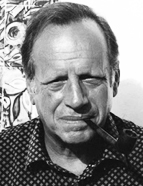

Such practices of openness are also evident in the very important role he played in promoting poetry on various television programmes, notably Imagens da poesia europeia [Images of European Poetry] (1969-1974), a broad overview of texts and authors that he translated from the late 1940s onwards, now accessible in the memorable issues 163, 164 and 165 of Colóquio-Letras (2003). He translated “from Homer to Ibn Al Sâbûni” (no. 163), “from the ‘Cantilena de Santa Eulália’ to G.G.Byron” (no. 164), “from Charles Baudelaire to Tomás Segovia” (no. 165). He translated (from direct or secondary sources) from Greek and Latin, Anglo-Saxon and Arabic, Hebrew, Old and Modern French, Castilian and Catalan, English, the Nordic and Germanic languages, and Russian. What this undertaking shows is not only the eclecticism of his reading and the trans-historicity of his references, but also a rigorous critical approach, allowing him to select from sources that are the result of continuous research and the affirmation of a sure taste. In addition, he is part of a lineage of translators and the problematisation of what it means to translate, which is reflected in his essays on a wide variety of poets and fiction writers. For example, Adriano’s well-known poem “Animula vagula blandula” is translated by David Mourão-Ferreira as “Alma minha, brandinha, vagabunda, / do corpo acompanhante e moradora, / (...)” ( Colóquio-Letras no. 163, p.154), which is interesting both for its nod to Camões’ sonnet “Alma minha gentil, que te partiste” and for its reference to Marguerite Yourcenar’s Mémoires d’Hadrien (1951) – an author he would study in his 1988 little book Marguerite Yourcenar: Retrato de uma voz [Marguerite Yourcenar: Portrait of a Voice]. The key point to note is the circulation of meaning, sources and knowledge of David Mourão-Ferreira as a critic, translator and omnivorous reader, together with the “harmonious correspondence” already alluded to between recurring themes and motifs, such as vanitas, temporality, death and affections, consolidating a meditation on the human condition that he will never cease to pursue. The anthological purpose will also follow him elsewhere, notably in the three volumes of the series Portugal – A terra e o homem – Antologia de textos de escritores do século XX [Portugal – The land and the man – Anthology of texts by 20 th -century writers)] (1979, under his own name; 1980 and 1981, with Maria Alzira Seixo). Notable for that time is the careful and very open choice of authors and their texts, always presented with succinct and very clear bio-bibliographical notes, constituting a treasure trove of clues that today’s reader will follow with benefit. With impeccable rigour in his self-criticism, Mourão-Ferreira does not hesitate to review and evaluate himself, in a gesture that is clearly evident in several prefaces to his essay volumes.
This work is financed by national funds through FCT - Foundation for Science and Technology, I.P, in the scope of the projects UIDB/04311/2020 and UIDP/04311/2020.
